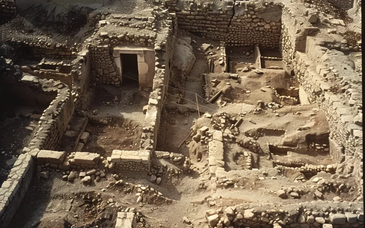There has been a great deal of debate over the construction design of the Ark. Some critics say the ship would have torn itself apart on the high seas due to the torque generated by the currents, wind and waves. Others point out the ratio of length to width to height of the Ark is very comparable to modern days ships. Extensive research was conducted in this area by members of the Korean Research Institute of Ships and Engineering. In their research they examined three key safety parameters. 1) Structural Safety 2) Overturning Stability and 3) Seakeeping Quality.
Structural Safety:
Because the exact hull design and shape of the Ark are unknown, the researchers used twelve different hull designs which they believe most closely match what would have been used on the Ark. The Ark had no need of propulsion, but it is believed there would have been a wooden sail and rudder device which would have helped keep it turned properly in the wind and currents to prevent excessive stress on the structure.
The designs were also partially designed based on the accounts of explorers who claim to have seen the Ark on Mount Ararat and reported or drawn the shapes of what they encountered. The researchers allowed for a variety of load variations as well as construction methods. The Bible tells us the Ark had three decks. In the testing, researchers used models in which all three levels carried equal amounts of cargo while others used the standard 2:2:1 load ratio. In this ratio the lower two decks would have carried a heavier cargo load than the upper most deck, thus allowing for greatly stability.
Throughout this segment of the testing the maximum stress was less than the allowable stress levels set by the American Board of Shipping. When the testing was completed the technical journal reported the Ark, "had high structural safety".
Overturning Stability:
This portion of the testing concerned a second critical aspect of the Ark. Even if the structural design was safe, it would do little good if the ship was prone to capsizing in high seas. The test not only concerns the ships ability to withstand a wave, but also the vessel's ability to recover or restore itself before being impacted by the next wave. This segment of the stability is known as the Restoring arm. Once again the researchers conducted their tests on twelve different hull designs.
The calculations used to evaluate this portion are complex and consist of numerous complex formulas which I will not bore you with here. In regards to overturning stability, the American Bureau of Shipping (ABS) has standards for overturning stability which all ship designs must adhere to. The research conducted concluded the Ark was thirteen times more stable than required by the ABS standards.
Seakeeping Quality
This phase of the test looked at the Ark's ability to remain safe and afloat in high sea conditions. In other words, how high could the waves have gotten before the Ark's design would have been in danger of failing. Again, a series of complex formulas were used to calculate the stability of the Ark using the previous findings in addition to more testing. In the final calculations it was determined the Ark had a reasonable beam-draft ratio to provide for the safety of the hull, crew and cargo in high seas. The research indicated the Ark could have safely survived seas with waves as high as 30 meters. This means the Ark could have survived waves nearly 100 feet in height.
In conclusion the overall dimensions and design of the Ark provided a very stable and safe vessel. The evidence shows it is possible to construct a vessel the size of the Ark from wood and have it be a stable and safe craft even on very violent and turbulent seas.



